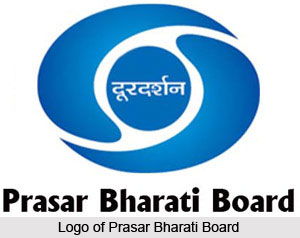 Prasar Bharati is a statutory autonomous body established under the Prasar Bharati Act. It is the Public Service Broadcaster of the country. The objectives of public service broadcasting are achieved in terms of Prasar Bharati Act through All India Radio and Doordarshan, which earlier were working as media units under the Ministry of Information of Broadcasting. They later became constituents of Prasar Bharati.
Prasar Bharati is a statutory autonomous body established under the Prasar Bharati Act. It is the Public Service Broadcaster of the country. The objectives of public service broadcasting are achieved in terms of Prasar Bharati Act through All India Radio and Doordarshan, which earlier were working as media units under the Ministry of Information of Broadcasting. They later became constituents of Prasar Bharati.
All India Radio
Sound broadcasting started in India in 1927 with the proliferation of private radio clubs. The operations of All India Radio (AIR) began formally in 1936, as a government organisation, with clear objectives to inform, educate and entertain the masses. When India attained Independence in 1947, AIR had a network of six stations and a complement of 18 transmitters. The coverage was 2.5 percent of the area and just 11 percent of the population. Rapid expansion of the network took place post Independence. AIR today has a network of 229 broadcasting centres with 148 medium frequency (MW), 54 high frequency (SW) and 168 FM transmitters. The coverage is 91.79 percent of the area, serving 99.14 percent of the people in the largest democracy of the world. AIR covers 24 Languages and 146 dialects in home services. In External services, it covers 27 languages; 17 national and 10 foreign languages.
Doordarshan
Doordarshan has a three tier programme service - National, Regional and Local. The emphasis on the National programmes is on events and issues of interest to the entire nation. These programmes include news and current affairs, magazine programmes and documentaries on science, art and culture, environment, social issues, serials, music, dance, drama and feature films. The regional programmes are beamed on DD National at specific times and also on the Regional Language Satellite Channels, catering to the interests of a particular state, in the language and idiom of that region. The local programmes are area specific and cover local issues featuring local people.
Objectives of Prasar Bharati
The major objectives of the Prasar Bharati Corporation as laid out in the Prasar Bharati Act, 1990 are as follows:
 * To uphold the unity and integrity of the country and the values enshrined in the Constitution;
* To uphold the unity and integrity of the country and the values enshrined in the Constitution;
* To promote national integration;
* To safeguard citizens` rights to be informed on all matters of public interest by presenting a fair and balanced flow of information;
* To pay special attention to the fields of education and spread of literacy, agriculture, rural development, environment, health & family welfare and science & technology;
* To create awareness about women`s issues and take special steps to protect the interests of children, aged and other vulnerable sections of the society
* To provide adequate coverage to diverse cultures, sports and games and youth affairs;
* To promote social justice, safeguarding the rights of working classes, minorities and tribal communities;
* To promote research and expand broadcasting faculties & development in broadcast technology.
Administrative Board of Prasar Bharati
The Corporation is governed by the Prasar Bharati Board, which comprises a Chairman, an Executive Member (Chief Executive Officer), a Member (Finance), a Member (Personnel), six Part-time Members, a representative of the Ministry of Information & Broadcasting and the Directors General of All India Radio and Doordarshan as ex-officio Members. The Chairman is a part time member with a six year tenure. The Executive Member has a tenure of five years, subject to the age limit of 65 years. Member (Finance) and Member (Personnel) are whole time members with a six year tenure, subject to the age limit of 62 years.




















